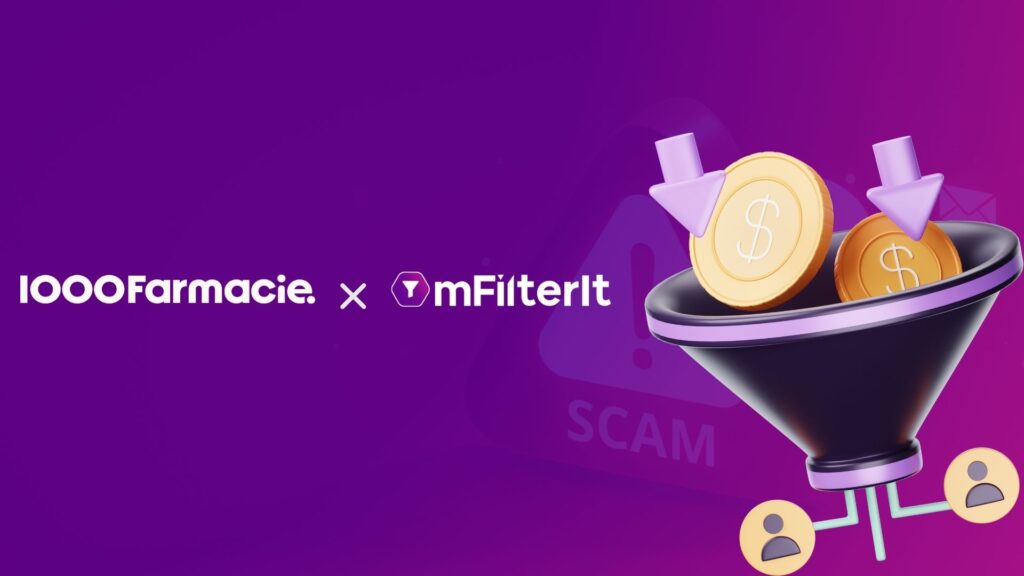Affiliate marketing has emerged as one of the most viable sales promotion strategies that brands employ today. However, the rapid rise in affiliate marketing fraud has become a significant concern, as businesses can lose hundreds of billions every year with fraudulent activities. Affiliate marketing campaign are not excluded from these schemes, and mFilterIt reports indicate that affiliate fraud may result in the potential loss of up to 30-35%. For most businesses, affiliate advertising fraud wastes promotional, and marketing spends, which would be recovered with smart monitoring tools.
Table of Contents
ToggleWhat is Affiliate Fraud?
Affiliate ad fraud refers to the fraudulent acts of malicious affiliates that exploit the system to wrongly earn commissions. They go through marketing procedures in the wrong manner and are making false conversions, clicks, or leads, which inflates the marketing metrics and ad spends for a brand without giving a good ROI on the campaign. According to Influencer Marketing Hub, affiliate marketing is expected to grow at a CAGR of 10.1%.
Hence, the need for efficient tools to detect and prevent ad fraud is more important to optimize spending, minimize losses, and protect brand integrity.
Why is affiliate fraud so serious?
It is a very significant reason to distinguish why affiliate fraud should not be taken lightly because it usually leads to severe financial losses and damage to the reputation of the brands. The issues range from ad fraud, both general and sophisticated, to matters such as brand infringements and fake brand communication by affiliates, in which the unethical affiliates misuse the brand resources for personal gain.
Ad Fraud Impact
Affiliate ad fraud undermines ad effectiveness because it artificially inflates conversion metrics. Ad fraud issues like lead punching, ad stacking where several ads are layered to get impressions, and fake clicks impact brands. Over time, these acts prove counterproductive to marketing efficiency, present misleading data, and tremendous brand loss. In an environment where ad budgets are significantly constricted, failure to focus on these types of fraud will be detrimental to the long-term success of the campaign.
Concerns with Brand Infringements with Affiliates
Affiliate infringements are far more prevalent than traditional ad fraud. That is a set of practices that are unethical and could damage the reputation of a brand. This includes a practice known as brand bidding, in which the trademark of a brand is used to drive traffic to their sites, or the use of influencer coupon codes to inflate sales metrics artificially. Very often, affiliates would also make IP violations such as typo-squatting, a method that uses small misspell of the brand’s URL to route traffic to harmful websites. Such violations not only compromise the overall effectiveness of the affiliate campaign but also erode the trust created between the brand and its legitimate affiliates.
Types of Affiliate Ad Campaigns Brand must Track for Full-Funnel Protection
There are different types of affiliate fraud contingent upon the commission structure of the campaign, and they may be classified as follows:
Cost-Per-Click (CPC)
In this, for every click on an ad, the affiliate would make money. It is prone to click fraud wherein bots and click farms inflate the number of clicks but engage no real customer.
Cost-Per-Leads (CPL)
The affiliates are paid according to customer actions such as the form submissions and signing up on emails. In this aspect, the most common tactic fraudsters would use is fake leads or invalid customer actions.
Cost-Per-Sale (CPS)
Affiliates get paid according to commissions on sales that are completed. Manipulation with this model typically happens through the pushing of fake transactions or exploiting return policies for gaining commissions from sales later reversed.
Common Issues in Ad Fraud
Of course, ad fraud manifests in many ways, and the most common categories included are listed below:
- Lead Punching- Bad or low-quality leads are generated to earn a commission. These convert into no sales, and hence marketing dollars go to waste.
- Organic Poaching- They steal the organic traffic and dupe tracking systems to earn commissions for sales they never help make.
- Ad Stacking- Here, multiple ads are overlapped on top of one another in unnoticeable ways in which impressions are created that seem to be real but do not engage the user.
- IP & Proxy – There are certain techniques that are used in affiliate marketing fraud and these fraudulent schemes are carried out by creating malicious locations using IP spoofing and proxy servers to generate fake traffic and clicks that cannot be traced.
- Imperceptible Window – Techniques used include showing advertisements through small, transparent or overlay ads that are not seen by the user hence resulting in fake impressions or fake clicks without the knowledge of the user.
- Click Fraud – It occurs when a company’s automated bot or dishonest user simply repeats online advertisements or incurs damages to the clicked ad in order to exhaust most of the company’s resources.
Brand Infringement Issues for Affiliates
Affiliates’ infringement includes unauthorized uses that compromise a brand’s intellectual property or marketing efforts. Affiliate infringements include the following, though not limited to:
- Brand Bidding- Affiliates use a brand’s keywords or trademarks while competing with that brand. This type of practice has increased costs to a brand and easily confuses consumers.
- Duplicate Products- Sometimes, affiliates make duplicate products that dilute brand presence, present various prices at these sub-sites while making others unavailable and bring discrepancies in pricing.
- Misuse of Influencer Coupon Codes- Some affiliates distribute the influencer coupon codes to people beyond the intended reach. Doing this implies that the sales metrics inflated do not represent genuine consumer intent behind it.
- Violations with IP and Typo-Squatting- Affiliates open up fake websites that resemble the domain of the brand closely and capture the misdirected traffic thus misleading consumers.
- Brand Information Misrepresentation- Affiliates often give false information about a brand’s products or services that smear the brand’s reputation and result in revenue loss.
How mFilterIt protected a Global FinTech Brand from Affiliate Fraud
A leading fintech player collaborated with mFilterIt to fight affiliate fraud on a global scale. mFilterIt affiliate fraud detection tool detected and prevented up to 36% of average fraudulent activities. Continuous monitoring of affiliates resulted in 67% reduction of ad frauds in the affiliate campaigns and improved the click-to-lead ratio by 25%. These improvements not only saved the fintech company considerable marketing dollars but also ensured that lead quality improved immensely from affiliate campaigns.
Also, mFilterIt detected brand infringement by 32% of the affiliates. Monitoring and ensuring automated takedowns are what we initiated. 27% of affiliates were engaged in brand bidding and 25% were promoting with false communication and fake coupon codes.
The solutions of mFilterIt are designed to detect fraud in real-time, ensuring brands get one overall affiliate fraud monitoring system. Thus, the integrity of all campaigns is verified, and businesses can now protect their marketing budgets.
Conclusion
Affiliate marketing is a good tool for business, but fraudulent activities pose inherent risks if not checked. Other than pure financial loss from affiliate fraud, some direct consequences include damage to the brand, misleading campaign data, and damaged relationships with affiliates. With the right set of brand safety solution and strategies in place, however, businesses can greatly reduce their exposure to these associated risks.
As the face of the digital landscape continues to change, the only way a brand can ensure its best use of marketing dollars is through tools like mFilterIt, optimizing affiliate campaigns. Businesses prevent fraud while protecting the reputation of their company and maximize return on investment in affiliate marketing.







